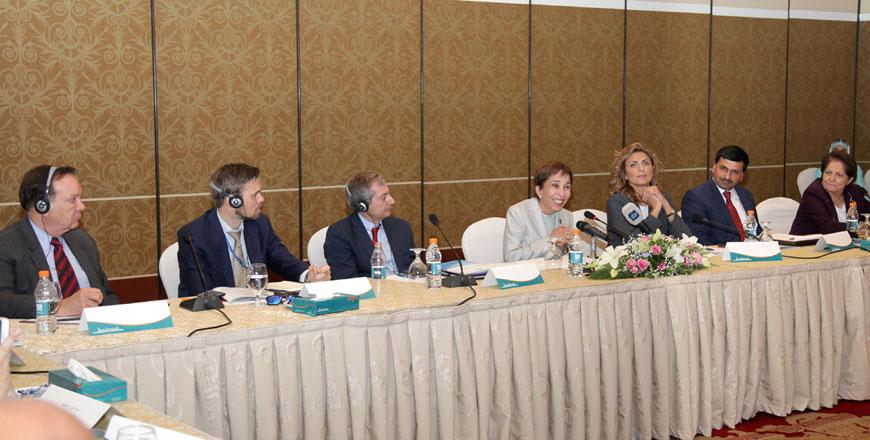You are here
Women’s issues taking back seat as gov’t deals with refugee crisis — JNCW
By Rana Husseini - Apr 01,2015 - Last updated at Apr 01,2015

AMMAN — The Jordanian National Commission for Women (JNCW) on Wednesday reiterated its commitment to lobbying for women’s rights in cooperation with civil society.
“I truly believe that we should always unite our efforts and consult with each other to come up with unified and strong positions when it comes to the women’s movement’s demands in Jordan,” JNCW Secretary General Salma Nims said.
Nims was speaking during a meeting at the JNCW with media and civil society organisations to reveal the outcome of Jordan’s participation in the UN 59th Session of the Commission on the Status of Women in New York.
“Our participation was successful and we acknowledged that we still have many challenges ahead that we are not addressing properly, especially on the government and Parliament side,” she said.
One of the main challenges, according to Nims, was the estimated influx of 1.4 million Syrians into Jordan, which has pushed the government to shift its priorities from women’s issues to dealing with the increased burdens and maintain the quality of services provided to refugees.
“We also addressed religious dialogue, including Sharia [Islamic law] and the fact that religion should be used to liberate women not pressure them,” the activist said.
Highlighting some of the statistics included in the Kingdom’s position paper that was presented at the meeting, Nims said women’s participation increased to 12 per cent in the Lower House and 35.9 per cent in local councils in 2013.
She added that Jordanian women hold approximately 18 per cent of ministerial positions and constitute 18.4 per cent of representatives in the diplomatic corps.
Female enrolment rates in university education reached 51.7 per cent in 2013, and the percentage of women holding a university degree has more than tripled in the recent years, according to Nims.
Jordan has also witnessed a major leap in the provision of healthcare and has managed to close the gender gap in the area of health and life expectancy; female life expectancy stood at 76.7 years in 2013, while male life expectancy is 72.7 years, she added.
The perceived threats of economic instability and invisible societal barriers, she added, fuels the need to “rely on negative coping mechanisms such as early marriages, which were 13.2 per cent of all registered marriages in 2013”.
Gaps in the variety and quality of education and health services — including reproductive health — represent an additional challenge for women and girls, especially for those living with disabilities, Nims added.
She said social stereotypes and negative cultural attitudes related to the expected role that women and girls should play in society continue to slow down women’s empowerment and gender equality.
The perception that women and girls are in need of guardianship and protection is too frequently translated into restrictions in terms of movement, social engagement and civic participation, the activist asserted.
“Media professionals as well as the education system need to be empowered to portray a more equal and non-biased representation of women and girls in society, avoiding the promotion of stereotypes in media programming and school curricula,” Nims stressed.
Related Articles
AMMAN — Representatives of governmental and non-government organisations met on Monday to discuss achievements and the most pressing challen
The Jordanian National Commission for Women (JNCW) on Tuesday announced the launch of its activities for the “16 Days of Activism Against Gender Violence” campaign.
AMMAN — The Jordanian National Commission for Women (JNCW) on Sunday called for cancelling Article 308 that pardons rapists if they marry th

















